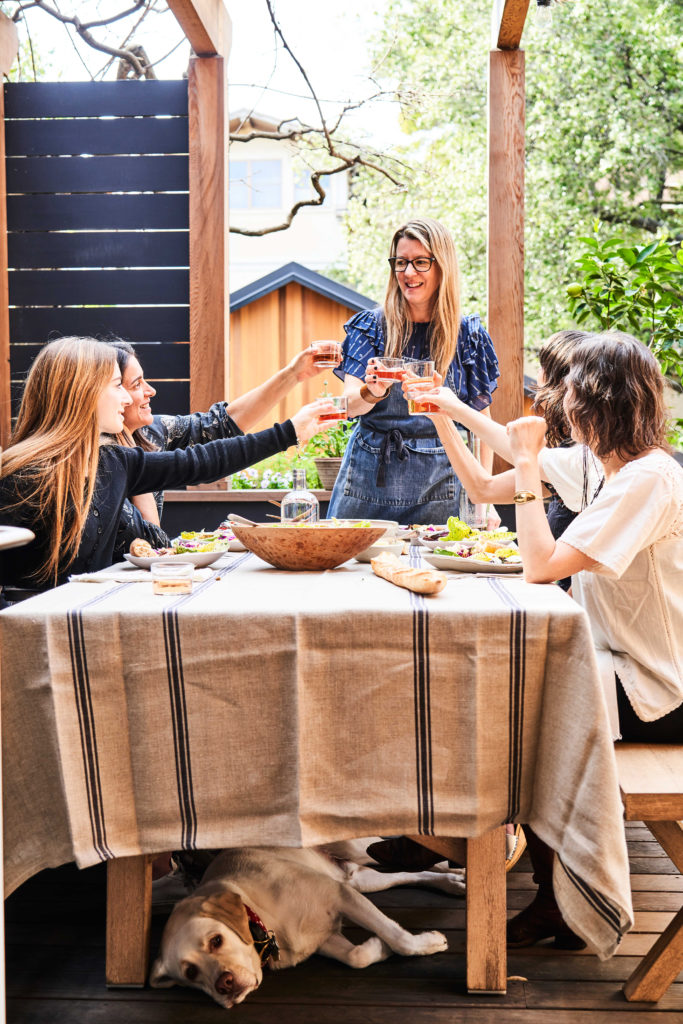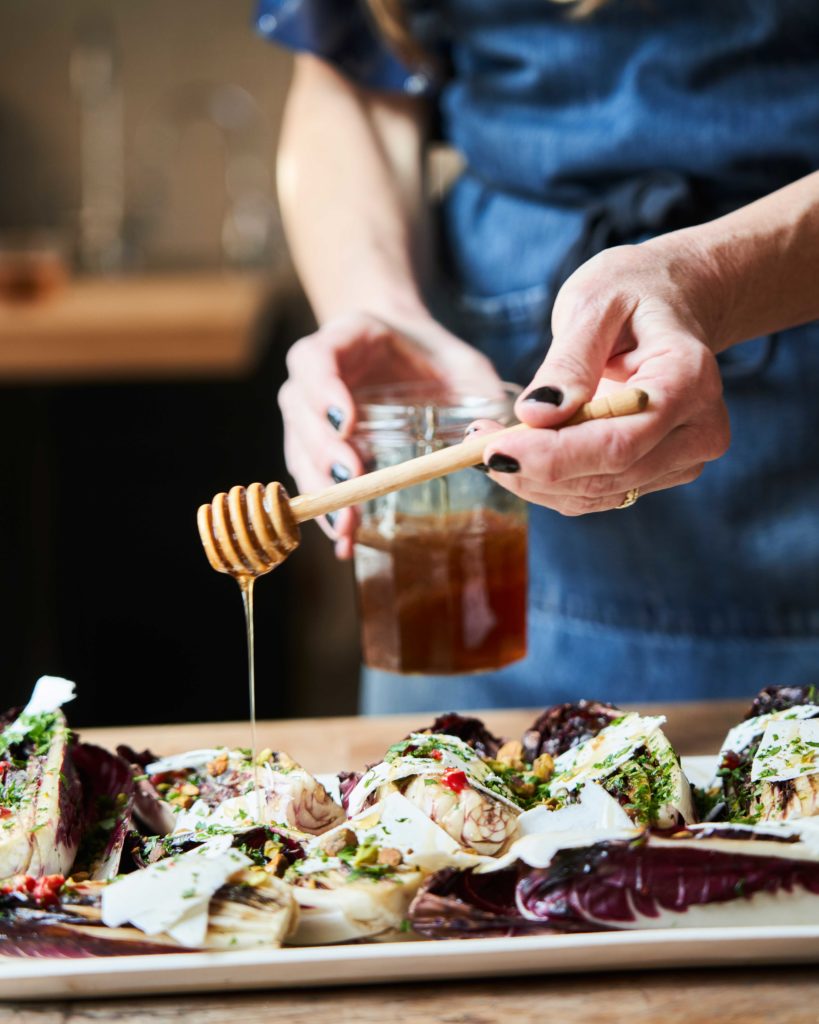
Salad Days
Author Phyllis Grant’s technicolor salads combine vibrant produce and simple, smart techniques—but they also tell a story.
Sunlight beams through the windows of Phyllis Grant’s kitchen, lending a magazine-worthy glow to everything it touches, from the 12-foot butcher-block island to the bowl of Kishu mandarins casually luxuriating on an olive wood platter. It’s clear that this is the beating heart of the home that Grant shares with her kids, Dash, 12, and Bella, 17, and her husband, the actor Matthew Ross (you’ll recognize him from roles such as Gavin Belson in Silicon Valley). It’s a natural gathering place for family and friends, with glass-paned accordion doors that open onto a generous deck, marble countertops, and, perhaps best of all, a refrigerated drawer dedicated solely to cheese.
Grant, a Berkeley native, has been cooking at home for years, chronicling her life as a parent and human on her blog Dash and Bella. She’s also worked in pastry in the fast-paced kitchens of New York. Those recipes, memories, and moments are now bound together in her memoir, Everything Is Under Control. It’s the kind of book you gobble up in one sitting—and her recipes are just as alluring. You can find her most recent recipes on Instagram tagged #hellasalads.
So what are hella salads? Grant’s use of the word “hella” is a nod to her Northern California upbringing, where the Oakland-originating slang term is used in abundance. It’s a Merriam-Webster-approved expression of “extremely,” or “a lot of.” “When I moved to New York City in 1988 no one had heard it before, so we used it to show where we were from.” says Grant. “Now Taylor Swift uses it in her songs but for a while there it was our special Bay Area word. Hella rad. Hella awesome. Hella salads.” After the rocky 2016 election, the word felt especially therapeutic. “At the time,” says Grant, “I was trying to rejoice in the beautiful things in my life. I was yelling a lot about things that I loved.”

Clockwise from the left: Isabel Ross, Sarah Marchick, Phyllis Grant, Margi Young, and Anne Marxer toast with rosé, while white lab Bodhi hangs out below. Photo by Thomas J. Story.
The book’s 17 recipes reflect Grant’s desire to always make eating a little bit more flavorful, more satisfying, and more comforting. “The goal was to move away from the preciousness of seasonality in some ways,” says Grant. “It’s this whole idea of universal cooking and templates, and of play and repetition, that’s made me a better cook.”
Giving her salads a hashtag on Instagram gave them agency, sending pristine, lovingly arranged piles of Bay Area produce out into the world. Now others are following suit, perfecting anchovy-spiked dressings and finding natural light that illuminates their own #hellasalads. It might not be a full-fledged movement yet, but the idea is right. Grilled radicchio with hot honey, cabbage salad with citrus-crème fraîche dressing, or avocado bowls with anchovy vinaigrette are all hella good choices.

Thomas J. Story
How to #Hellasalad
Bypass the Bowl
“I used to throw everything into a large salad bowl and toss and toss,” says Grant. “The flavors were good but there was always a sad herby sludge remaining at the bottom of the bowl. I have a new approach. For more control and easier serving, I assemble my more complicated salads on a cookie sheet, large plate, or platter.”
Layer Flavor
“Toss the greens with dressing, herbs, and salt. Then layer on delicate peach halves or Yukon Gold slices or fans of sliced avocado. For more flavor (and glistening beauty!), paint or drizzle the sliced fruit or vegetable with garlic lemon oil. Next is the cheese (wisps or craggy chunks or finely grated).”
Finish with a Flourish
“Rain down roasted chopped nuts, herbs, and coarse salt, or smear in a swoosh of hummus, white bean purée, or Greek yogurt (mixed with lemon zest and herbs) on the plate before assembling.”
Hella Good Recipes
This story originally appeared in our summer 2020 Outdoor Living issue.
To read: Click on the right and left arrows at the edge of the box to turn pages; to make the text larger click on the fullscreen icon in the lower-right corner.
